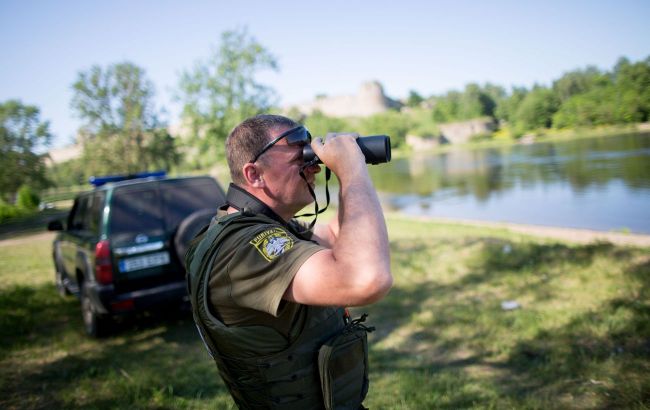Border incident: Russians remove Estonian navigational buoys on Narva river
 Archive photo: Russians removed Estonian fairway buoys on the Narva River (Getty Images)
Archive photo: Russians removed Estonian fairway buoys on the Narva River (Getty Images)
Russians removed over 20 buoys installed by Estonian border guards to mark the fairway in Estonian waters on the night of May 23, according to the head of the Border Guard Bureau of the Ida-Viru County, Eerik Purgel.
According to him, Estonia and Russia usually install buoys in the Narva River each spring to mark the fairway. This is because the riverbed changes over time, so the fairway markings are reviewed each spring.
Purgel said that until 2022, this process was carried out by mutual agreement, but since last year, Russia has not agreed with Estonian positions regarding the placement of buoys.
"We decided to install floating signs for the summer season in accordance with the agreement of 2022 because they are needed to avoid navigation errors so that our fishermen and vacationers do not accidentally enter Russian waters," he said.
Russia decides to remove the buoys
This year, Russia announced that it disagreed with the locations of about half of the 250 buoys.
Estonia installed the buoys according to the State Border Treaty and the buoy placement agreement concluded between border services in 2022. The first 50 buoys were installed on May 13.
But on Thursday night, Estonian border guards discovered that the Russians were removing these buoys and had removed 24 overnight, some of which were disputed buoys.
Estonian Prime Minister calls it a border incident
Purgel reported that the Police and Border Guard Board had contacted the Russian border service and demanded explanations regarding the removal of buoys and their return.
Meanwhile, Prime Minister Kaja Kallas stated that it was a border incident. She emphasized that Estonia would approach the situation soberly and calmly.
Minister of Foreign Affairs Margus Tsahkna added that this incident should be treated calmly, as Russia's behavior is provocative.
What preceded it
In recent days, it became known that Russia decided to unilaterally 'change' its maritime borders with Lithuania and Finland in the Baltic Sea. Lithuanian Prime Minister Ingrida Šimonytė called these plans a provocation.
Following the resonance, the draft law from the Ministry of Defense regarding the unilateral change of borders with Lithuania and Finland in the Baltic Sea disappeared from the Russian government's website.

